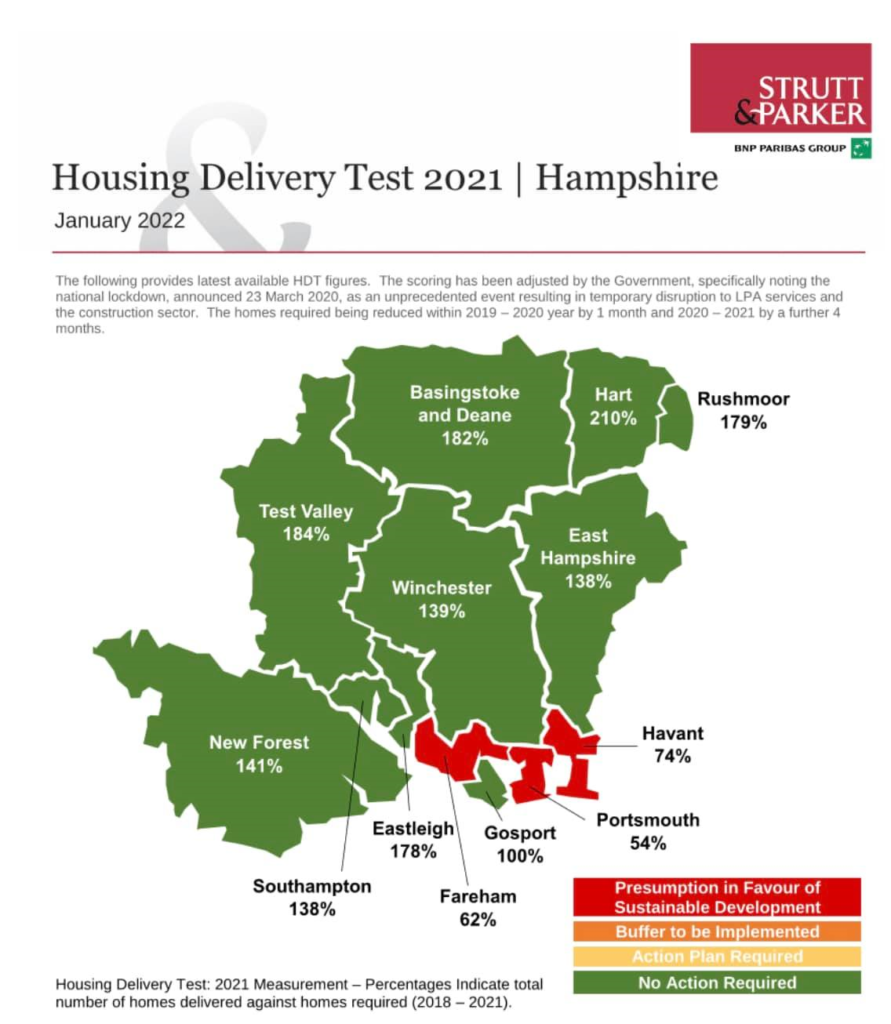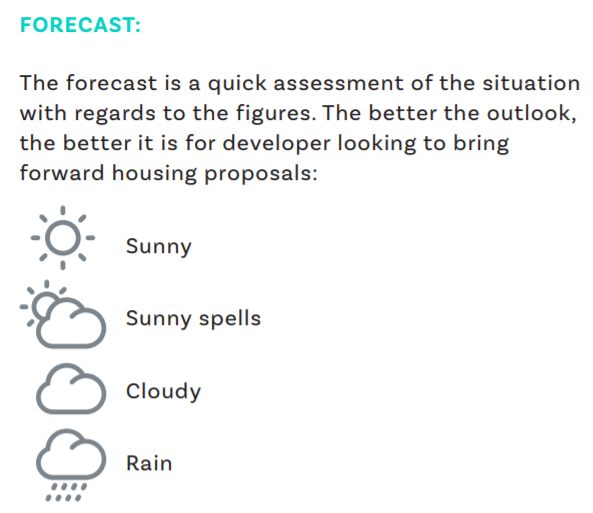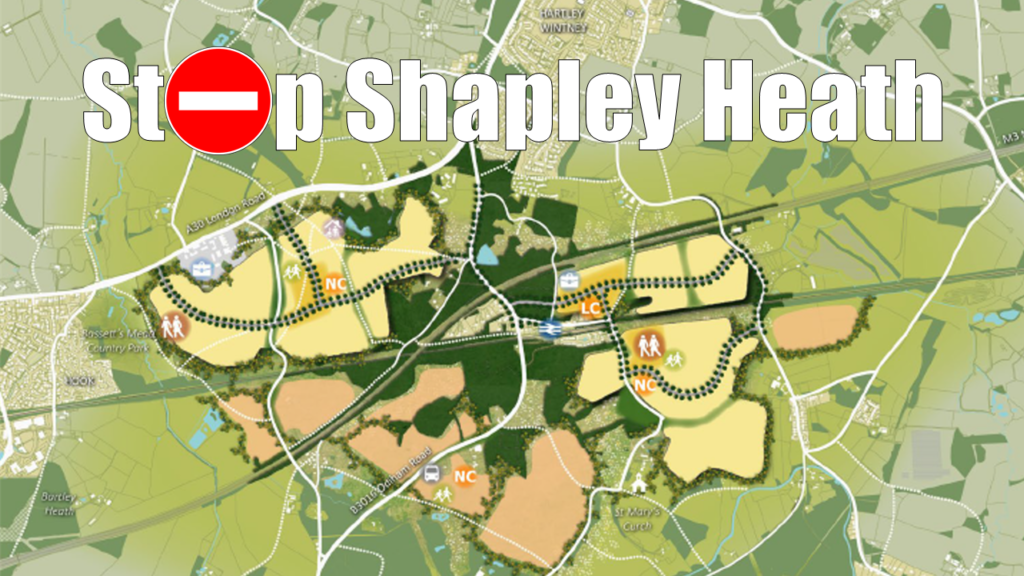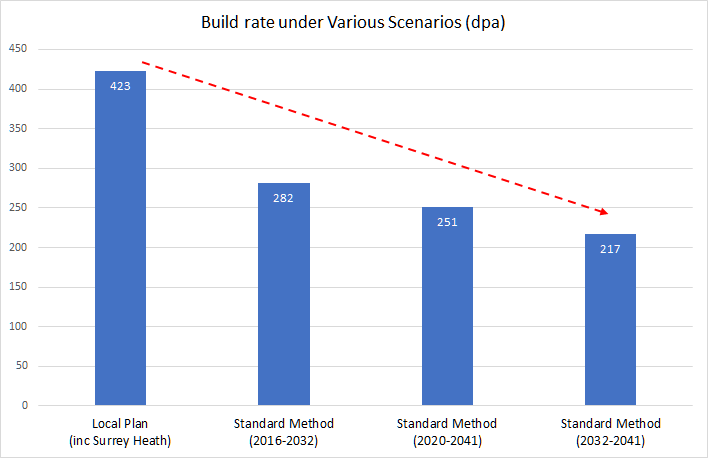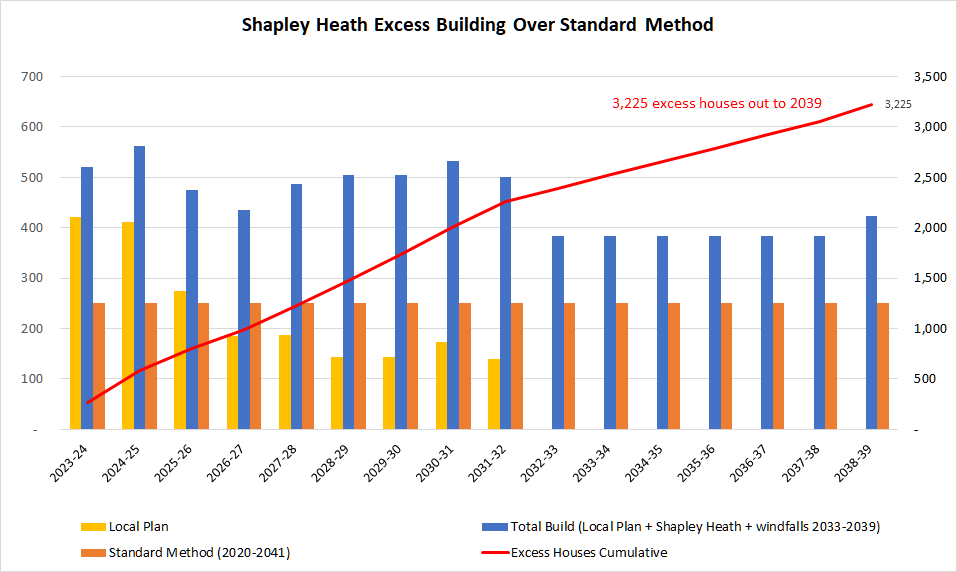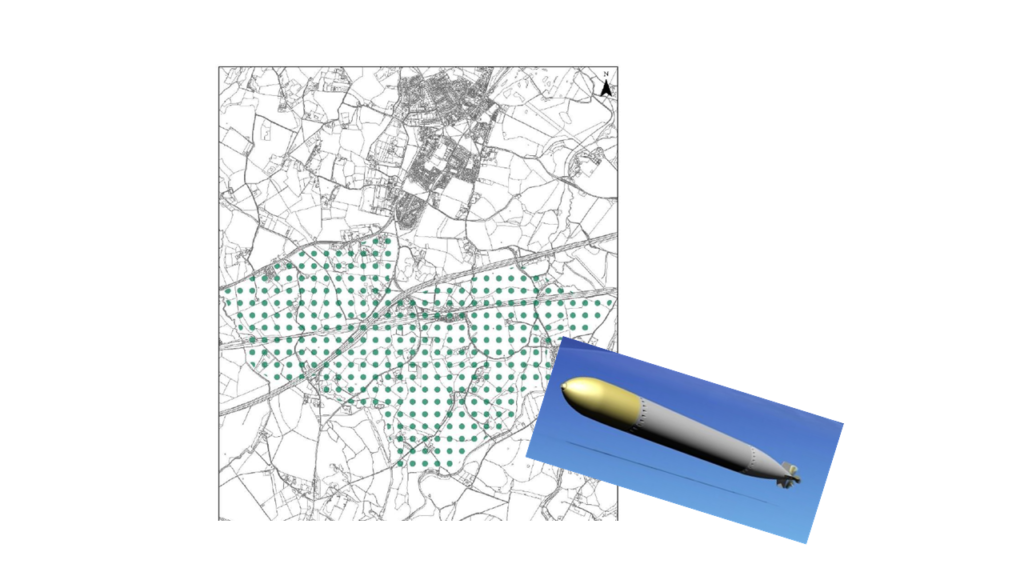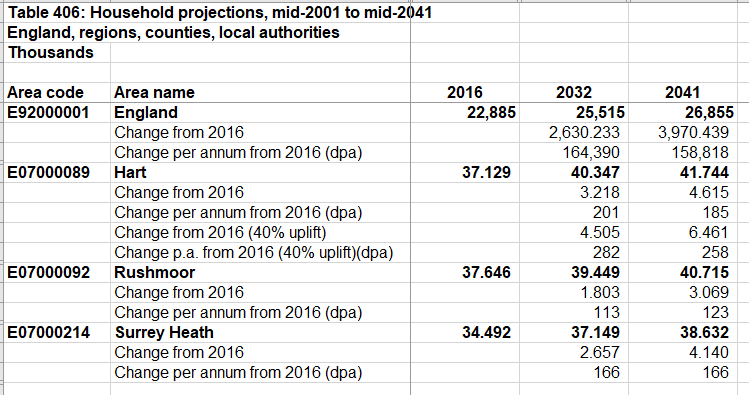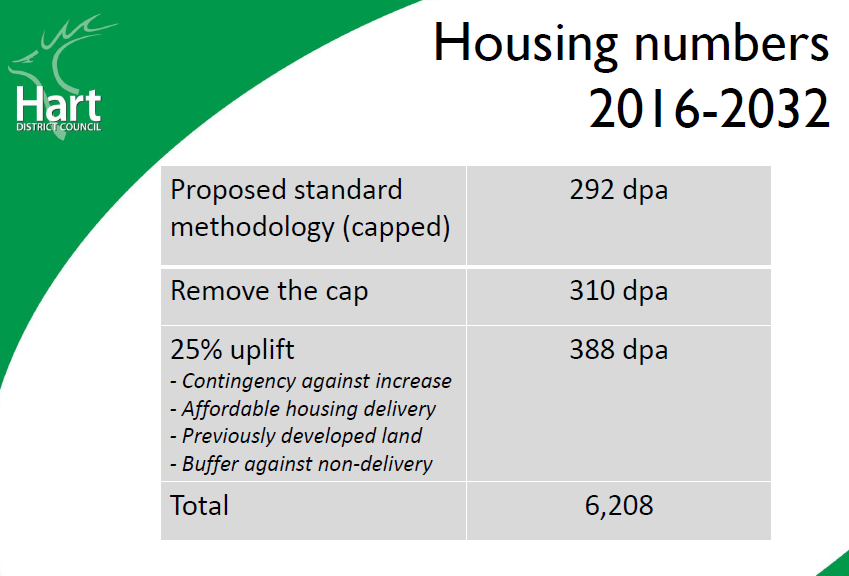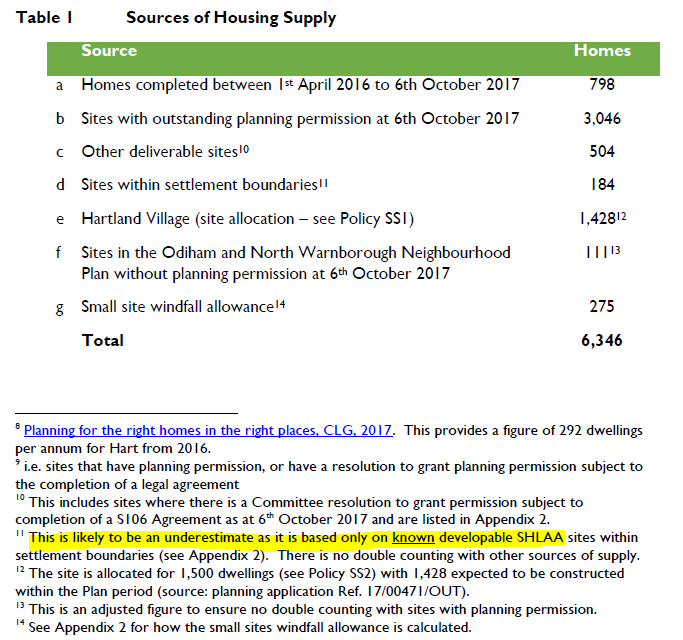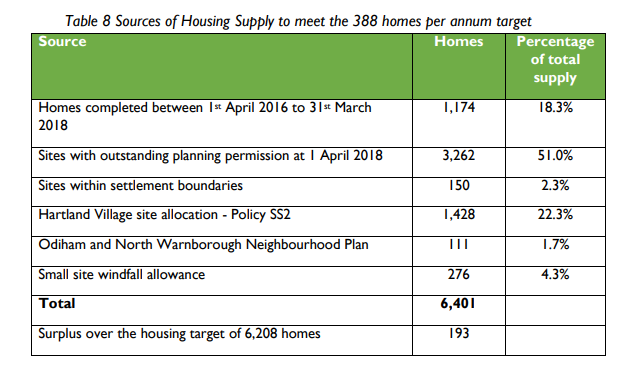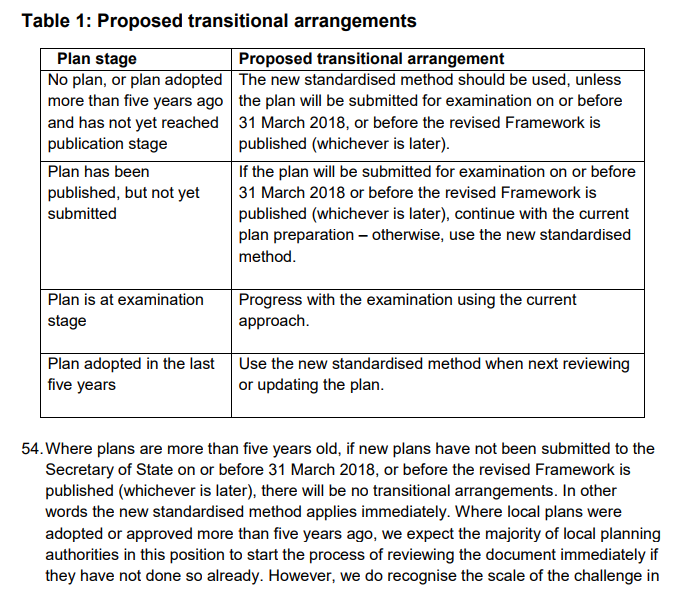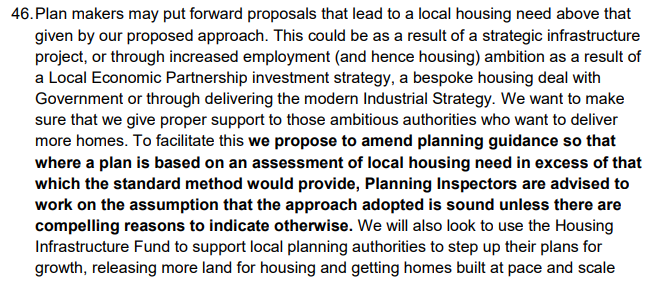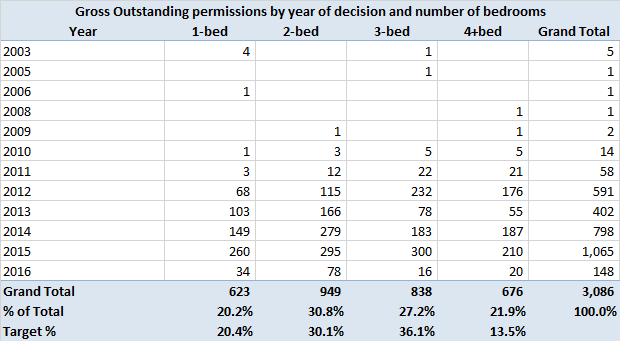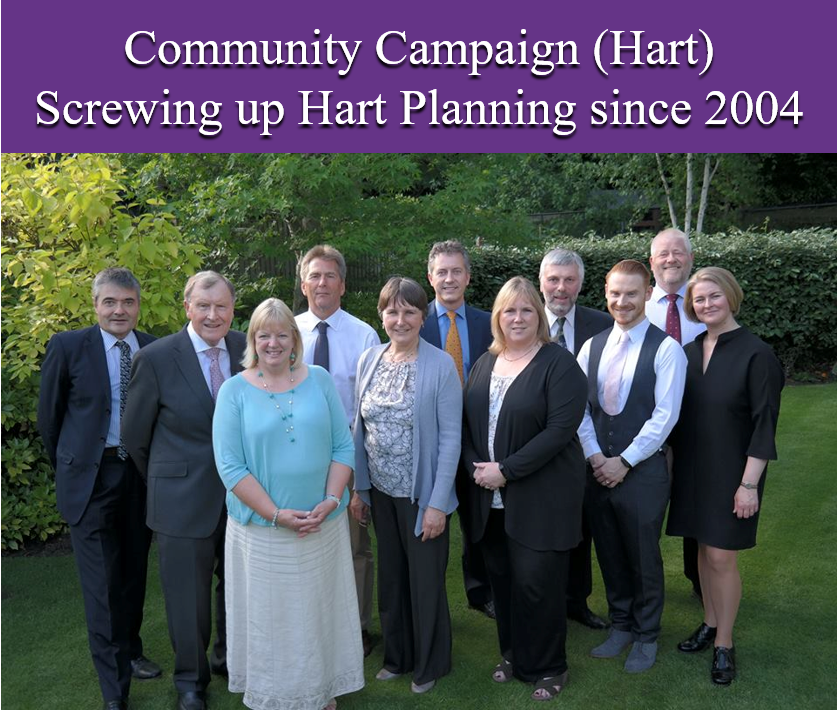
CCH reveal plans to Completely Concrete Hart
Community Campaign Hart (CCH) have revealed their plan to Completely Concrete Hart by sticking to the ridiculous 10,185 housing target in the draft Local Plan. This comes despite the new Government method for calculating housing need results in a much lower housing target for Hart, Rushmoor and Surrey Heath.
It is time to up the pressure on CCH to come up with a strategy to take account of this new information. They should build a Local Plan that is good for the whole of Hart that everybody can live with. It is time to drop their plan to Completely Concrete Hart.
To be clear, in our view, Hart’s housing target should be reduced to around 6,500, to take account of the new Government approach, plus a few hundred for Surrey Heath. Using the figures in the draft Local Plan consultation (para 104), this would leave 906 new houses left to plan for. This could be made up from
- Sun Park (320), from Local Plan para 109
- Grove Farm (423), sadly
- The forthcoming Rawlings depot site in Hook (123)
- The remaining 40 can come from any number of brownfield sites for instance:
- Hartley Wintney (Nero Brewery – 10)
- Winchfield (Winchfield Court extension – 17)
- The derelict eyesores on Fleet Road – up to 200.
We can save Hartland Village (Pyestock) for the 2030’s.
The revelations came in a reply to an email sent to CCH by a concerned correspondent on Facebook. We reproduce the question, James Radley’s answer and our commentary in red below.
Question to Community Campaign Hart (CCH)
I write to you ask a question about your party’s policy towards supporting (or not) a reduced housing total for Hart District. Specifically, in regard of this statement on the We Heart Hart (WHH) Facebook page:
If Hart followed the latest Government approach to calculating housing need, even Hartland Park wouldn’t be needed. The remaining housing need could be met from Sun Park and any number of other small brownfield sites.
Answer from CCH revealing commitment to Completely Concrete Hart
I am probably the best placed to explain the CCH position on housing numbers. It is true that as a rule we do not engage in social media debates, mainly due to a lack of time. As well as trying to fit in my day job I also expect to spend over 6 hours in total in the council offices today and similarly tomorrow.
One has to ask why the council Deputy Leader and portfolio holder for Services is spending quite so much time in council offices working on the Local Plan. One would hope this time would be put in by the portfolio holder for planning, Lib Dem councillor Graham Cockarill. It obviously takes a lot of effort to Completely Concrete Hart.
Social media debates are very time consuming in order to stay on top of all the posts and then the debate tends to descend to the lowest common denominator. I for one would certainly rather put the time and effort in where it matters and unless one is going to invest all that precious time in the social media arena, better not to engage at all.
This sounds like CCH want to stay in their own bunker and not actually engage with anyone who disagrees with them. They are afraid to engage because they don’t have any facts or arguments to back up their new town ideology.
Unfortunately WHH are wrong in their assessment of housing numbers.
No, we are not wrong in our numbers. Here is the relevant section of the Government consultation document.

Para 15 of Planning for the right homes in the right places
Working through this. The demographic baseline is the latest DCLG household projections (Table 406) that can be found here. These show that over the period 2011-2032, Hart requires 218 dwellings per annum, or 4,536 in total. In the reference period of 2016-2026 used by the Government, Hart requires 209 dwellings per annum. This 209 dpa is then modified to account for market signals and results in a new Government figure for Hart of 292 dpa. Scaling up to the full planning period results in 6,132 new houses for Hart. And that’s it. No more further adjustments for changes in household size. No more houses for people we have to import who then go and work in London. This compares to the 8,022 in the SHMA and 10,185 in the draft Local Plan.
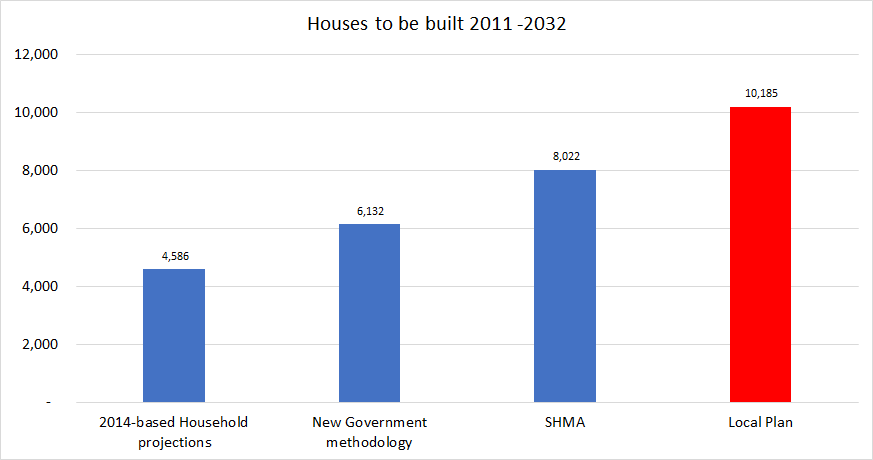
Hart housing targets under alternative scenarios
They are citing a baseline figure in a government consultation paper which is not part of the planning policy framework in effect at this point in time and is a figure which even if it was policy is taken as a starting point on top of which other factors will add to the housing numbers needed.
We have answered the point about the baseline above. The baseline is the demographic projection. The Government then already made the upwards adjustment for market signals in the 292 dpa figure. It is true that these figures are so far only part of a consultation paper, but the feedback we have received is that the Government is committed to pushing these through. It would seem prudent to us for Hart to take these figures into account now and prepare a Local Plan with two scenarios:
- The first scenario should be based upon the 6,132 outlined above. Plus a few hundred to give some flexibility to build some new houses for Surrey Heath. They may still have a problem meeting their new, lower housing target. This would give a total of around 6,500.
- The second scenario should be based solely on the SHMA figure of 8,022.
To be clear, the daft 10,185 target in the draft Local Plan should be dropped forthwith. Even James Radley admits the extra 2,000+ houses on top of the SHMA won’t affect house prices. As the Government position becomes clear, Hart can make the decision on which scenario can be submitted to the inspector. There is no need to Completely Concrete Hart.
We lost the fight against Grove Farm because we don’t have a local plan in place. We don’t have a local plan because the Conservatives have allowed it to drift for years in a sea of procrastination driven by their internal in fighting.
True, Grove Farm was lost because we don’t have a Local Plan. It was also lost because our policies are out of date and because the application was not determined on time. Yes, the Tories missed all their own deadlines. But CCH have also played their part by forcing a delay in the Local Plan last December.
The main reason for taking control was to get the local plan out and to do so by a total focus and not letting the intentional disruptions from WHH to deflect us from that.
At no time have we sought to delay the Local Plan. We Heart Hart first highlighted the project management and governance problems back in April 2015 and again in January 2016 after the consultation omnishambles.
It is quite clear that if we don’t get a local plan out that is based on realistic and future proof housing numbers, then Fleet & Church Crookham will continue to be blighted by bolt on developments such as Grove Farm, Pale Lane and whatever is next.
Yes, we need a Local Plan. And quickly. The realistic numbers to use are the Government’s new numbers. These are already future proofed by the extra houses to take account of market signals. We have suggested a modest further uplift to help out Surrey Heath.
It is interesting that the Deputy Leader for the whole of Hart is only concerned about Fleet and Church Crookham. We are also concerned about Owens Farm to the west of Hook. We are also concerned about the long term impact of adopting a ridiculously high housing target. This will then be compounded for decades to come, putting even more of our green fields under threat, including Pale Lane and Crookham Village.
WHH know this and are trying to undermine the new settlement option in the full knowledge that they are condemning us to yet more incremental developments which do not produce any retrospective infrastructure.
We are opposed to the new settlement because we don’t believe it is needed. And we certainly don’t believe it will solve the infrastructure problems facing the district. And we don’t want to Completely Concrete Hart. If we adopt the new Government housing numbers, it will be better for everyone.
I hope that my brief explanation helps.
It does, but not in the way he thinks. It confirms CCH is in the driving seat, dragging the Lib Dems along with disastrous policies to Completely Concrete Hart. The explanation confirms CCH is in a bunker, unwilling and unable to debate the real issues. CCH is locked into its new town ideology and is trying to justify it by sticking to a ridiculous housing target.
